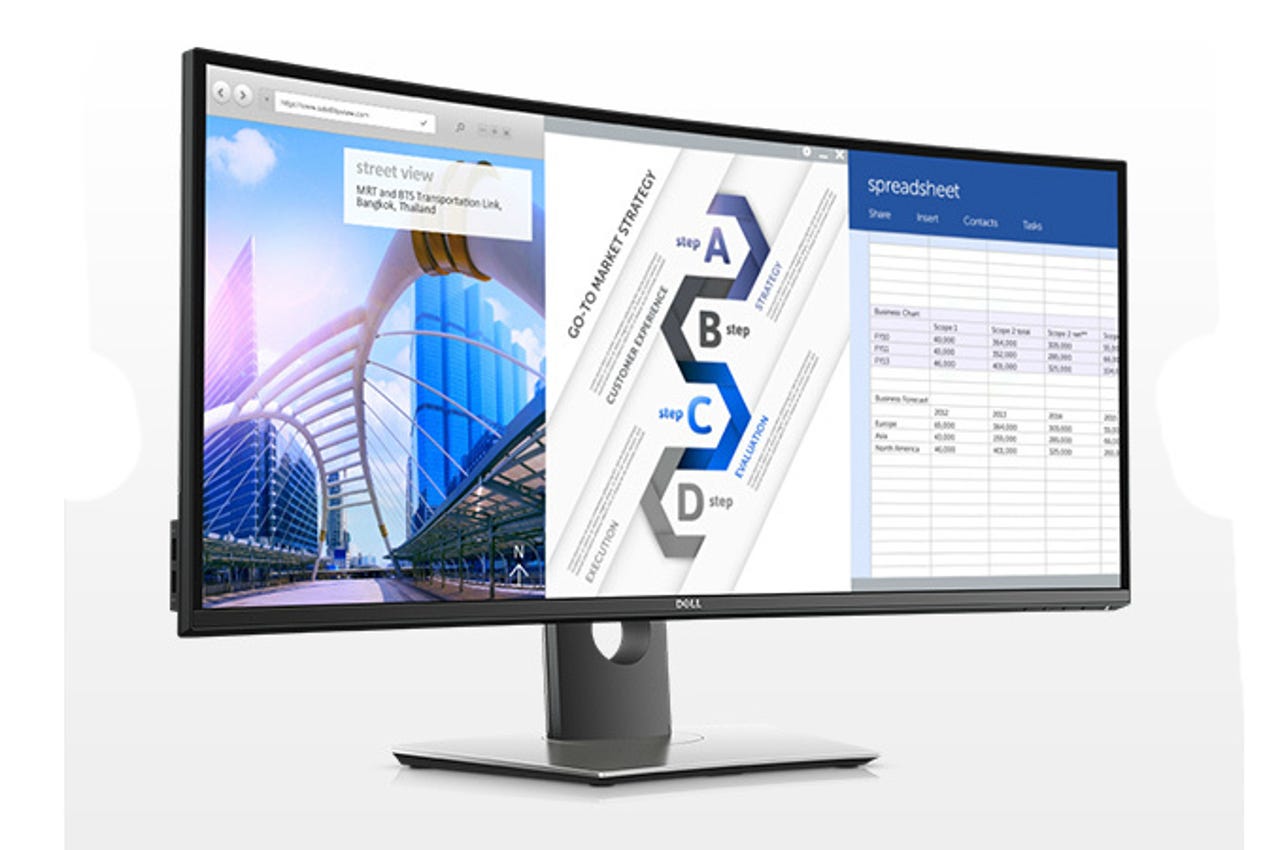With curved ultra-wide monitors, one screen may be better than two


Dell's curved 34-inch U3415W enables business PC users to run more programs at once without shuffling windows around.
Many business users now have two or even three screens, and there's some evidence that having more screen area boosts productivity. The problem with having two screens is that either there's a join right down the middle of your field of view, or else the second screen is positioned at an uncomfortable angle to the side. Tastes vary, but I don't like either.
Ultra-wide screens offer a better solution, by providing more usable screen area without necessarily taking up more desk space. With a total width of 2560, 3440 or more pixels, they let you run two or even three programs side by side. Further, many of today's ultra-wide screens are curved, which arguably make them more comfortable to use.
Ultra-wide screens are usually have a 21:9 aspect ratio rather than today's standard 16:9, so you get extra width without any extra depth. Resolutions start at 2560 x 1080 (QHD), but 3440 x 1440 (WQHD or UWQHD) and 3840 x 1600 (QHD+) screens are also available.
Three curved AOC C3583FQ monitors provide an immersive experience for gaming.
AOC and Philips helped pioneer the ultra-wide market in 2013, showing 29-inch (73cm) screens sourced from TPV Technology Limited (which owns AOC) at the CeBIT trade show in Germany. These were, of course, flat screens. However, AOC has just introduced a curved 35-inch version with the same 2560 x 1080 resolution, the Argon AG352QCX, which is expected to ship next month (December 2016). Aimed at gamers, this model can sync at up to 200Hz.
Dell entered the curved screen market in April 2015 with the 34-inch UltraSharp U3415W, and this September, it launched a slightly curvier model, the U3417W. Both are 21:9 format with a resolution of 3440 x 1440 pixels.
IDC tested the U3415W with people from "ten different industries ranging from finance to fashion design to software programming" and found they increased productivity and user satisfaction ratings (PDF).
HP has also produced some curved 34-inch monitors with the same resolution. The HP Z Display Z34c is for business users while the HP Envy 34c Media Display targets consumers. Last year, HP also launched "the world's widest curved All-in-One" PC with the same WQHD 34-inch screen.
Samsung, LG, Acer, Asus and other companies are also selling curved ultra-wide screens in the 29 to 35-inch range. Samsung, for example, has the highly-regarded S34E790C, a curved 34-inch professional monitor with WQHD Cinema Wide (3440 x 1440) resolution. LG has a similar 34-inch monitor, the LG 34UC88-B, with a companion model that includes two Thunderbolt 2.0 ports.
Asus offers the high-spec but expensive 34-inch curved Swift PG348Q screen with Republic of Gamers branding. Acer's Predator range includes both WQHD (3440 x 1440) and QHD (2560 x 1080) resolutions.
It's hard to say if curved screens are simply a passing fad, but the number of curved screen TVs on the market has grown rapidly since their introduction in 2014. They certainly appeal to gamers, who can get a more immersive effect by using two or three curved screens side by side. Of course, this doesn't mean businesses will adopt them. In fact, most of today's PC monitors measure around 20 to 25 inches, rather than the 40 to 65 inches where curved TV screens start to make a difference.
But as things stand, it seems to me that a 34-inch ultra-wide with a resolution of 3440 x 1440 pixels (110ppi) is more useful to a Microsoft Office (etc) user than a 4K (3840 x 2160) screen, where the extra pixels mainly provide better ppi figures. And if you plan to buy a 3440 x 1440 screen (USA, UK), the extra cost of a curved monitor may not be prohibitive.
AOC's C3583FQ has its hub connections in the base. Photo: AOC